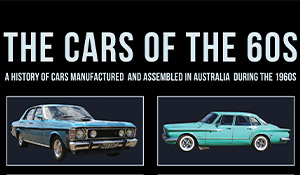Goodwood Festival of Speed
The British aristocracy aren't exactly known for letting tens of thousands of people go tromping through their grounds but then Lord March, current occupant of Goodwood House, isn't your average toff. Son of the 10th Duke of Richmond, he's also known as Charles March, a photographer and since 1994 he has been the chairman of the Goodwood Group of Companies.
The Goodwood Festival of Speed started as a modest hill climb event in 1993, running on just one day but still drawing a crowd of 25,000 people. March had wanted a motorsport return to Goodwood Motor Circuit, but didn't have the correct licences, so used his tricky private driveway instead.
Over two decades later, FoS as it's colloquially known, is a powerhouse of motorsport and car culture. Now four days of festivities, the event carefully avoids both the Le Mans and F1 races to ensure the crowds get their money's worth.
And get it you do. This was my first visit to Goodwood and even though I'm already home and writing this, I'm still amazed at what I saw. On the front lawn of the House was a gigantic sculpture, this year a giant fidget spinner adorned with Formula 1 cars through the ages. Classic cars from a nearly century-old Rolls Royce, a bunch of Fiat 500-derived machines and a McLaren F1 were parked on the grass in its shadow. No ropes. No fences. No boofhead security guards pushing you away.
It's a theme right across the grounds, with lots of interactive exhibits from manufacturers, all focused heavily towards the performance end of the spectrum. If you're wondering why motor shows as we know them are dying, here's why - Goodwood is unapologetically about really fast cars and getting close to them rather than being pushed away.
McLaren brought along its new 720S, the legendary F1 (chassis XP5), the new 570S Spider and an old race car or two. Just to make sure, show attendees scored themselves a Lego brick (most were orange) to bring to the stand and complete the giant 720S Lego model. Over the four days, McLaren luminaries from its road and race divisions made appearances to talk to the crowd and rub shoulders with them.
And it was the same at most manufacturer stands. Rolls Royce brought its insanely expensive Sweptail, a car the company proudly says is the most expensive ever made. Built for an unnamed customer by its Bespoke division, it was the exception that proved the rule - when roaming the roads, it was accompanied by three burly fellows in black polo shirts. Build cost is around US$13m (A$16m). The customer was keen to invoke the coachbuilding spirit of the 1920s and 1930s and by Jove, he got it.
There was also the new Dawn Black Badge edition, with 22 extra kilowatts from its twin-turbo V12 and a rather more pimpin' look, as the kids might say. That car is meant to attract a younger audience, which is slightly less laughable in Europe and the US than it is here (the Dawn kicks off at a mere $749,000 in Australia).
Porsche brought along a car it had previously refused to confirm existed, the 911 GT2 RS. The most powerful road-going 911 ever, the twin-turbo 3.8-litre flat six produces a bananas 515kW and 750Nm. Top speed is 340km/h and it'll cover the 0-100 in 2.8 seconds. Probably. It's likely quicker than that. Bigger turbos, water spray intercooler, a fettled seven-speed PDK and a titanium exhaust complete the picture. It also has four-wheel steer (joining the Aventador S and Ferrari F12 TDF) and a huge aero package. Underneath is a set of 265/35 tyres on the 20-inch front wheels and 325/30 on the 21-inch rears. Brakes are gigantic carbon ceramics, which is just as well given how quick this thing will be. The price in Australia is $645,700 plus on-roads. Options include a matching wristwatch and a weight-stripping Weissach package, as-yet unpriced.
There were plenty of cars we've seen before, but again, you could walk right up and snog them (as long as you were discreet). Bugatti had a huge display of Veyrons and Chirons; Ferrari's 70th Anniversary brought all the prancing horses to the yard; Lamborghini loaded up the transporter with the stunning Centenario and Aston Martin an even more pumped-up Vulcan. And Honda's Civic Type R was everywhere, soaking up the attention.
Jaguar chose to debut the XE Project 8, running it up the hillclimb on Thursday and Friday and making lots of noise while doing so. Sadly for Australians, that's the closest we'll get to one - we won't be getting the road version of that car here according to current thinking. Alongside was a pumped up XJ-R, wrapped in weird blue and white camouflage. Jaguar says it was to "complete final testing" which is an amusing gimmick. Known as the 575, the wraps will come off later in the year along with the usual reveal of its final spec. Expect the 575 to mean metric horsepower, or 423kW.
It wasn't just the big names, either. BAC Mono brought a beautiful version of their single-seat road-legal (well, in the UK anyway) track car. Elemental brought their new machine, the 540kg Rp1. The Rp1 is the brainchild of a few ex-McLaren bods. Powered by 1.0 or 2.0-litre Ford EcoBoost engines, the lightweight machines may not break any straight-line speed records but certainly went through the corners at a rapid rate.
The focus of the weekend always falls to Lord March's driveway - Friday and Saturday sees the competitive hillclimb event and in a thrilling finish Jaguar's XJR12D took the honours by 0.09 seconds with Justin Law at the wheel, followed by Jeremy Smith in the Penske PC22.
Goodwood is more than a hillclimb, more than a motor show, more than a glamour event. It's open to everyone and for anyone with slightest octane rating in their veins, it's a definite bucket list event.































